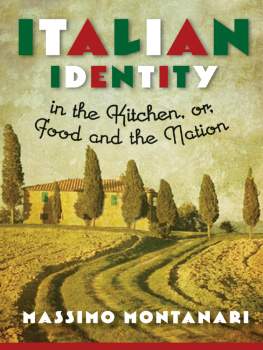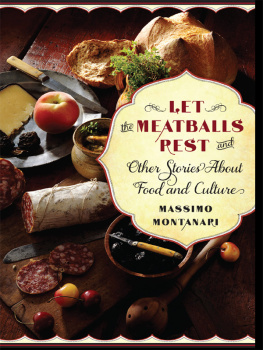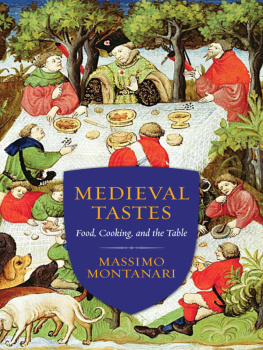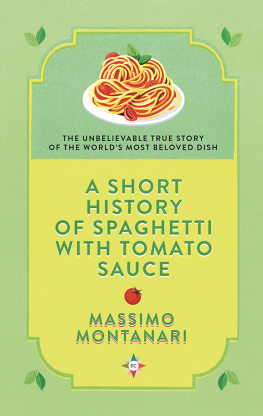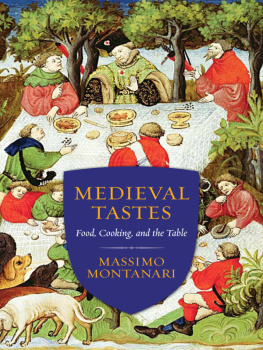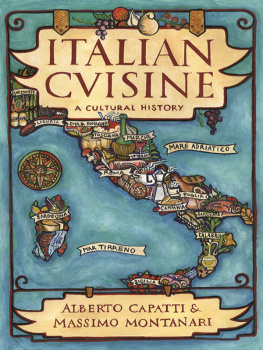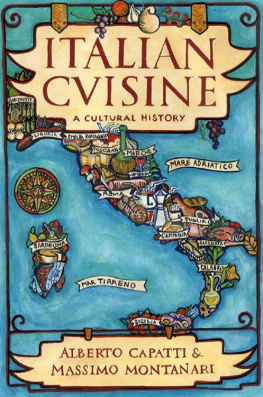ARTS AND TRADITIONS OF THE TABLE: PERSPECTIVES ON CULINARY HISTORY Albert Sonnenfeld, Series Editor
Salt: Grain of Life, Pierre Laszlo, translated by Mary Beth Mader
Culture of the Fork, Giovanni Rebora, translated by Albert Sonnenfeld
French Gastronomy: The History and Geography of a Passion, Jean-Robert Pitte, translated by Jody Gladding
Pasta: The Story of a Universal Food, Silvano Serventi and Franoise Sabban, translated by Antony Shugar
Slow Food: The Case for Taste, Carlo Petrini, translated by William McCuaig
Italian Cuisine: A Cultural History, Alberto Capatti and Massimo Montanari, translated by ine OHealy
British Food: An Extraordinary Thousand Years of History, Colin Spencer
A Revolution in Eating: How the Quest for Food Shaped America, James E. McWilliams
Sacred Cow, Mad Cow: A History of Food Fears, Madeleine Ferrires, translated by Jody Gladding
Molecular Gastronomy: Exploring the Science of Flavor, Herv This, translated by M. B. DeBevoise
Food Is Culture, Massimo Montanari, translated by Albert Sonnenfel
Kitchen Mysteries: Revealing the Science of Cooking, Herv This, translated by Jody Gladding
Hog and Hominy: Soul Food from Africa to America, Frederick Douglass Opie
Gastropolis: Food and New York City, edited by Annie Hauck-Lawson and Jonathan Deutsch
Building a Meal: From Molecular Gastronomy to Culinary Constructivism, Herv This, translated by M. B. DeBevoise
Eating History: Thirty Turning Points in the Making of American Cuisine, Andrew F. Smith
The Science of the Oven, Herv This, translated by Jody Gladding
Pomodoro! A History of the Tomato in Italy, David Gentilcore
Cheese, Pears, and History in a Proverb, Massimo Montanari, translated by Beth Archer Brombert
Food and Faith in Christian Culture, edited by Ken Albala and Trudy Eden
The Kitchen as Laboratory: Reflections on the Science of Food and Cooking, edited by Csar Vega, Job Ubbink, and Erik van der Linden
Creamy and Crunchy: An Informal History of Peanut Butter, the All-American Food, Jon Krampner
Let the Meatballs Rest: And Other Stories About Food and Culture, Massimo Montanari, translated by Beth Archer Brombert
The Secret Financial Life of Food: From Commodities Markets to Supermarkets, Kara Newman
Drinking History: Fifteen Turning Points in the Making of American Beverages, Andrew Smith
ITALIAN IDENTITY
in the Kitchen, or Food and the Nation
MASSIMO MONTANARI
translated by
Beth Archer Brombert
Columbia University Press
New York
ITALIAN
IDENTITY
in the Kitchen, or Food and the Nation
Arts and Traditions of the Table
Columbia University Press
Publishers Since 1893
New York Chichester, West Sussex
cup.columbia.edu
Copyright 2010 Gius. Laterza & Figli. All rights reserved. Published by arrangement with Marco Vigevani Agenzia Letteraria
Translation copyright 2013 Columbia University Press
All rights reserved
E-ISBN 978-0-231-53508-3
Library of Congress Cataloging-in-Publication Data
Montanari, Massimo, 1949
[Identit italiana in cucina. English]
Italian identity in the kitchen, or Food and the nation / by Massimo Montanari; translated by Beth Archer Brombert
pages cm
Includes bibliographical references and index.
ISBN 978-0-231-16084-1 (cloth: alk. paper)ISBN 978-0-231-53508-3 (ebook)
1. FoodItaly. 2. Cooking, ItalianHistory. 3. ItalySocial life and customs. 4. ItaliansEthnic identity. 5. National characteristics, Italian. I. title. II. Title: Food and the nation.
TX360.18M6613 2013
394.120945dc23
A Columbia University Press E-book.
CUP would be pleased to hear about your reading experience with this e-book at .
Jacket design by Julia Kushnirsky
Jacket photograph by Veer
References to websites (URLs) were accurate at the time of writing. Neither the author nor Columbia University Press is responsible for URLs that may have expired or changed since the manuscript was prepared.
CONTENTS

Massimo Montanari has devoted some thirty years and thirty books to the study and diffusion of Italian alimentary history and, more broadly, to the role of food as culture. As a medievalist his training provided him with a rich background in the literature, politics, economics, and sociology of medieval Europe and of an Italian cultural entity that lacked a political reality, an Italy that was not to become a nation for another half millenniumnot, in fact, until 1861. His prolific writings, erudite but never pedantic, investigating the history of eating, from the hunting and meat-eating of barbarians to the civilization of agriculture and bread, the significance of foods, the origins of customs, markets, locutions, productsall the many factors that entered into the alimentary culture of Europe, and ultimately of the New World as wellhave reached a wide audience, from scholars to gastronomes. Thanks to his close readings of medieval and Renaissance literature and to his generous quotations, nonspecialist readers have been granted a rare glimpse into the medical thinking and early cookbook writing that created an Italian cuisine when much of Europe was still unaware of such refinements.
The present volume, on Italian identity in cooking, has a personal resonance for me. Long before I knew what, or even where, Italy was, I had become acquainted with its culinary identity, or to be more precise, the identity that had been exported beyond its borders. As an only child growing up in downtown Manhattan I was frequently taken to restaurants, most often Italian. My familiarity with Italian food was not, however, limited to restaurant dishes. My mother, a great consumer of fresh fruits and vegetables (I dont remember ever seeing cans of either in our kitchen), was a regular client of the municipal market on 10th Street near Second Avenue, whose stalls were operated exclusively by Italian immigrants. They spoke their local dialects to each other and broken English to their customers. Before the construction of that indoor market, some of these same vendors and many of their earlier fellow Italians had stands, really pushcarts, all along First Avenue and the side streets. Many of those pushcarts were still to be seen when I was child, piled high with fruits, vegetables, dried fish, tripe, olives, all things never sold in non-Italian grocery stores. I remember eating artichokes, prickly pears, fennel, broccoli rabe, beet greens, broad beans, fresh peas that I learned to shell when my schoolmates ate peas out of a can. And when most people were eating iceberg lettuce, if they ate salad at all, we had romaine, escarole, radicchio, dandelion greens (my mother drew the line at garlic). Not even my college roommates had ever seen an artichoke.

